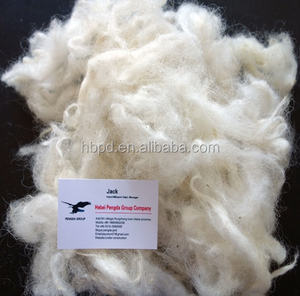Is Cashmere a Natural Fiber? Exploring Its Pure Origins and Uses
Is Cashmere a Natural Fiber? Exploring Its Pure Origins and Uses
Blog Article
Reasons You Have To Need Cashmere an All-natural Fiber for Comfort and Style in Everyday Wear
In the world of fabrics, few fibers equal the deluxe and convenience of cashmere. Just how can one best use cashmere to raise their design? These appealing questions lay the foundation for an enlightening exploration into the world of cashmere. cashmere fibre.
Recognizing the Lavish Nature of Cashmere

Evaluating the Comfort Aspect of Cashmere Clothing
What qualities underscore the comfort variable of cashmere garments? The soft qualities of cashmere is the very first top quality to consider. Its luxurious structure makes it seem like a 2nd skin, supplying heat without the weight or irritation associated with various other wool products. Additionally, cashmere's distinct fiber structure enables breathability, regulating temperature level and preventing overheating. The material's flexibility and longevity make sure that it molds against the body conveniently, keeping its form gradually. Cashmere's hypoallergenic properties additionally add to its convenience, making it a suitable choice for sensitive skin. Lastly, the ability to layer cashmere items without bulkiness heightens the comfort factor. Basically, the convenience of cashmere is stemmed from its softness, breathability, longevity, hypoallergenic nature, go to my blog and adaptability.

The Environmental Impact and Sustainability of Cashmere
While the comfort and elegance of cashmere are definitely appealing, it's equally crucial to consider its partnership with the environment. Cashmere production, mainly in Mongolia and China, involves raising cashmere goats, which can considerably strain breakable grassland ecosystems due to overgrazing. Efforts are being made to establish sustainable cashmere manufacturing techniques, such as anonymous rotational grazing and cleaner handling strategies.
Comparing Cashmere to Artificial Fibers: A Cost-Benefit Evaluation
Despite its ecological challenges, cashmere offers a distinct collection of benefits over synthetic fibers. On the cost side, cashmere is indisputably much more pricey because of its labor-intensive production process. Yet, the advantages make it worth the investment. Cashmere's natural fibers provide unequaled soft qualities and heat, equating right into comfort that synthetic fibers have a hard time to match. Cashmere pieces are very durable, appealing durability that offsets initial prices over time. Unlike artificial fibers, cashmere doesn't add to microplastic air pollution, making it a more sustainable option. In contrast, synthetic fibers, while more affordable upfront, offer less comfort, have much shorter life expectancies and pose ecological problems. Hence, when evaluating cost-benefit, cashmere's premium high qualities make it a worthwhile financial investment for day-to-day wear.
Designing Tips With Cashmere for Everyday Elegance
Having considered the cost-benefit analysis of cashmere compared to synthetic fibers, it becomes clear why this extravagant material is a favored option for numerous. When styling cashmere for everyday style, simplicity is vital. Ultimately, the intrinsic sophistication of cashmere makes it a functional addition to any wardrobe, effortlessly improving daily attire with a touch of deluxe.

Final Thought
In recap, the remarkable residential or commercial properties of cashmere make it a beneficial enhancement to any closet. Its extravagant feeling, breathability, convenience, and versatility to varying temperature levels are exceptional. In addition, cashmere's sustainability and lower environmental influence contrasted to synthetic fibers additionally improve its appeal. The ageless sophistication of cashmere, incorporated with its versatility, adds class to everyday wear. Therefore, purchasing cashmere garments is a rewarding decision for sustainability, style, and convenience.

Report this page